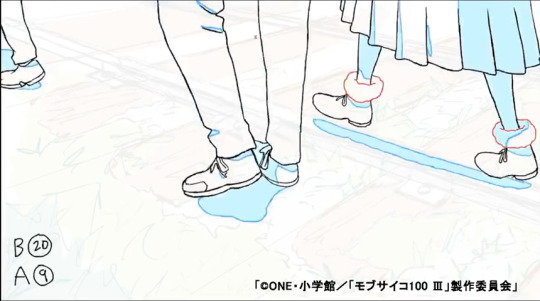#8088
Text

Bull-Micral 90/20 (1983)
148 notes
·
View notes
Text










2 notes
·
View notes
Text
dos laptop drops in for an old school vibe
this viral retro mini laptop just appeared on our desk, we ordered it about a month ago and its just as cute as you expect! with a modern TFT display and keyboard and USB disk interface, but still rockin the classic 8088 chipset - its a perfect experimentation platform for very old software. i love the reuse of these 90's datecoded chip. we got one of our old 512MB SD cards to plug in for data transfer and have it running Spectrum Holobyte Tetris. any recommendations of software we should try running? it won't be able to run doom - that requires a later chipset!
6 notes
·
View notes
Video
youtube
VONSIM TUTORIAL | SIMULADOR ASSEMBLER | CISC | ASSEMBLY | LENGUAJE ENSAMBLADOR | INTEL 8080
#youtube#simulador#ensamblador#assembly#assembler#intel#8088#tutorial#aprender#programar#programacion
0 notes
Text
Here's Your Future (Future Computers)
Title : Here’s Your Future, De Future-familie: van zelfstandige micro’s tot uitgebreide netwerken
Publisher : Future Computers
Language : Dutch
Year : Somewhere in the 1980’s
Subject : FX 0, FX 10, FX 20, FX 21, FX 30, FX 40, FX50/50, FX50/300
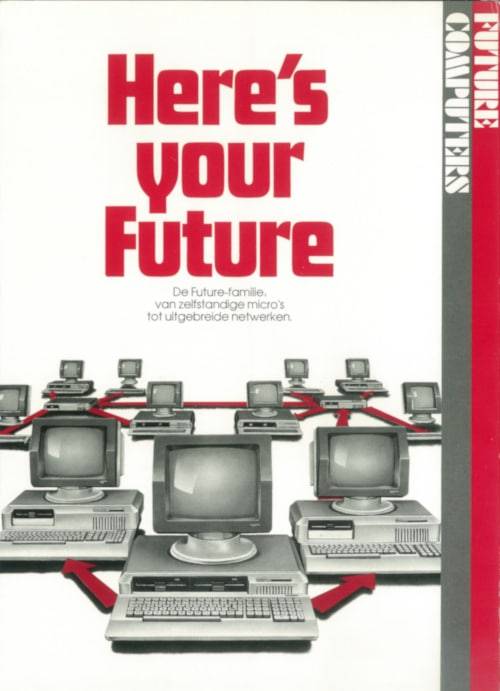
View On WordPress
#8088#CP/M#future computers#fx 0#fx 10#fx 20#fx 21#fx 30#fx 40#fx50/300#fx50/50#MP/M#ms-dos#spellbinder#xenix
0 notes
Text

I need to relax, so its time to disassemble this 8086 computer. Here's its old Seagate hard drive with 20 megs of space.
1 note
·
View note
Link
Check out this listing I just added to my Poshmark closet: Simplicity Vintage Pattern Bundle & (1960's)(Size 10 MP).
0 notes
Photo

Advertisement for the Canon AS-100
From Personal Computing, November 1983, p.36
Source: Vintage Computing and Gaming
9 notes
·
View notes
Text
I Was Just Passing The Time
When I first ended up at Rocketdyne (it was serendipity, not a conscious move) I was gobsmacked knowing I was working on the Space Shuttle Main Engine program, with bonafide rocket scientists and engineers. It was 1987, almost exactly one year since Challenger exploded and I was working on the FMEA/CIL (Failure Modes and Effects Analysis/Critical Items List) in anticipation of the shuttle’s…

View On WordPress
#boredom#dot matrix#Engineers#FMEA/CIL#IBM XT#Intel 8088#Rocket Scientists#Rocketdyne#Scientists#SSME
0 notes
Note
Why are computers systems based on the number 8? Like 8-bit graphics, 64 bit rams and others.
8-bit is an easy-to-work-with power of 2 that becomes a good building block. We settled on 8-bits for the first generation of microprocessors and just increased from there to 16, 32, and 64 bits as processor lineages evolved. 8008 -> 8080 -> 8086/8088 -> 80286 -> 80386 -> 80486 -> Pentium, you get the idea
There used to be computers in other bit-width architectures before the dominance of x86 unified most general purpose computers. The big players made 6-bit, 12-bit, 18-bit, 30-bit, 36-bit, etc. sized computers of all kinds for various applications. It was kind of the wild west for a long time because everyone was trying all sorts of things based on what they needed from a computer design.
So it's all powers of 2 because binary. 8 is just convenient.
53 notes
·
View notes
Photo

original url http://www.geocities.com/Hollywood/8088/ last modified 2006-07-26 21:18:11
104 notes
·
View notes
Photo
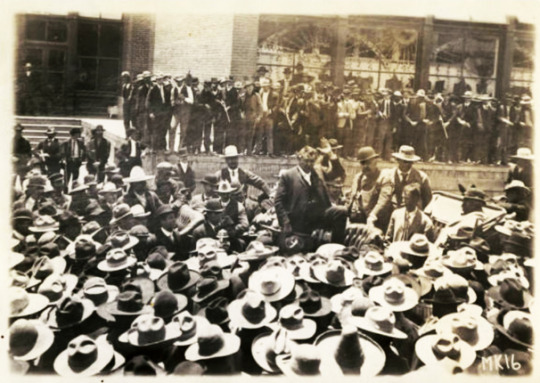
On this day, 1 June 1906, Mexican workers at the copper mine in Cananea, went on strike and put up picket lines demanding shorter hours and more pay. Mexican workers earned significantly less than workers from the US doing the same jobs, so they demanded a pay increase from 3 to 5 pesos per day, with a 1 peso increase for anyone earning more than the minimum, as well as a shortening of the working day from 10 to 8 hours, and they demanded more opportunities for promotions for Mexicans. A management spokesperson told the assembled strikers they could not agree to any of their demands, due to a government pay cap so the workers began marching towards the lumberyard. The American yard boss turned hoses on the workers, then gunshots rang out and a melee began, leaving three strikers dead, as well as the boss and his brother. The workers retaliated by burning the lumberyard to the ground and headed to the town hall. As the workers marched, carrying their dead, a posse of armed Americans opened fire. An American eyewitness described "a lot of drunken cowboys"… "shot at everything that moved – Chinamen, chickens, Mexicans and gringos." 20 workers were killed and a further 45 arrested and jailed. The following morning, 200 armed Arizona Rangers from Bisbee arrived by train, and were quickly sworn into the Mexican army. They were joined by more Mexican troops, and martial law was declared. A general told a crowd of miners that any that did not resume work would be drafted into the army and sent to fight Yaqui Indigenous people. The strike was beaten, dozens had been killed and two strike leaders were subsequently jailed for 15 years. Although the workers lost this occasion, outrage about what happened was a huge boost to the revolutionary movement which would soon sweep the country. More information, sources and map: https://stories.workingclasshistory.com/article/8088/Cananea-miners-strike Pictured: the boss addresses strikers https://www.facebook.com/photo.php?fbid=636610671845485&set=a.602588028581083&type=3
110 notes
·
View notes
Text
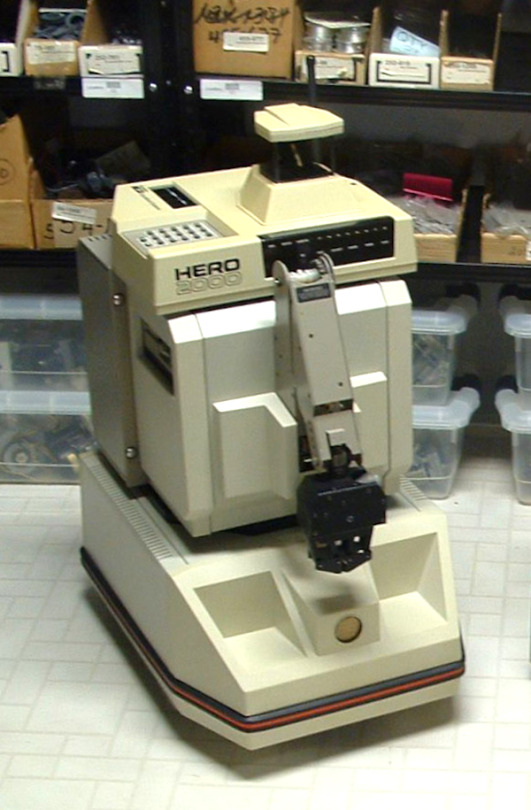

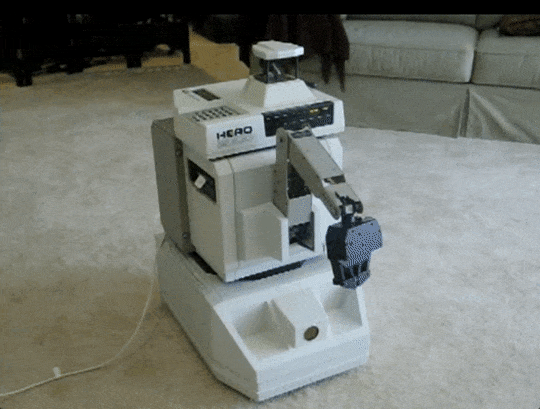
HERO 2000 (1986) by Heathkit, Benton Harbor, Michigan. “HERO 2000 features advanced programmability. This incredible robot has a 16-bit 8088 master microprocessor that runs user programs and eleven 8-bit peripheral microprocessors. This lets you simultaneously operate HERO 2000’s sensory and manipulative functions. There’s also HERO 2000 BASIC stored in the 64K ROM. … The synthesized voice lets HERO talk, play music and even emit sound effects. And for easy programming, HERO 2000 has direct text-to-speech conversion. … The optional robot arm is multi-jointed with a gripper that has a sense of touch. The arm lifts one pound in any direction, plus has full wrist action and accurate repeatability.”
102 notes
·
View notes
Text
Hamas didn’t invade Israel on Oct. 7 for its amusement. The barbaric sneak attack is a part of the pogrom intended to wipe out the Jewish state. It was a crime against humanity, and not just because of its savagery. We would all be worse off if Israel ceased to exist. The same cannot be said for Islamic terrorists.
Israel’s contributions to the modern world are momentous. When not dodging bullets, rockets, and homicide bombers, Israelis have since 1948 developed:
Copaxone and Rebif, drugs that treat multiple sclerosis, and Exelon, which treats mild to moderate dementia in Alzheimer’s and Parkinson’s patients.
The PillCam, “a minimally invasive ingestible camera in a capsule that allows visualization of the small bowel.”
The water desalination process.
The Sniffphone, “that can actually ‘sniff out’ diseases.”
And SpineAssist, “the first-ever spine robot” that has the “ability to provide real-time intraoperative navigation.”
The Weizmann Institute of Science in Rehovot, Israel, responsible for some of the inventions listed above, has also produced diabetes and flu vaccines, is using T-cells to treat damaged spines, and is a pioneer in industrial — and medical — uses nano materials.
Other impactful Israeli products include drip irrigation, a revolutionary microprocessor called the 8088, the NIR heart stent, voice-over-internet protocol, the USB flash drive, the Waze navigation app, ReWalk, “a commercial bionic walking assistance system,” and “the first commercially viable firewall software.”
Our own security has benefited from Israel’s labor and work ethic.
“Many Israeli innovations are present in upgrades to U.S. Air Force fighters and Army equipment,” says the international law firm Smith, Gambrell & Russell. One important advance in particular is the helmet-mounted display system for the new F-35 Joint Strike Fighter.
So we have a country of 9.23 million, mostly desert, that is only 75 years old, is “surrounded by enemies” and in a constant state of war, which has “no natural resources,” yet “produces more start-up companies on a per capita basis than large, peaceful, and stable nations and regions like Japan, China, India, Korea, Canada, and all of Europe.” It is the only nation outside of the U.S. that Warren Buffet invests in.
Have the Palestinians or Hamas, currently at war with Israel, done anything that compares to what the Israelis have achieved? More broadly, beyond the Allahista terrorist groups, what has Islam contributed to the modern world?
Not much.
Since 1901, Jews, who total 0.2% of the world’s population, have won 189 Nobel prizes for physics, medicine, chemistry and economics. Over that same period, Muslims, who make up nearly a quarter of the global population, have won four.
If it seems as Islamic groups, Hamas and Hezbollah prominent among them, are more interested in spreading nihilism, committing atrocities, and destroying civilization than making the world a better place, well, then there’s a good reason for it. That is exactly what the heroes of an increasingly large number foolish Westerners are aiming for.
Meanwhile, Israelis see themselves “as having a role in the world to repair the world,” says Chemi Peres, managing partner and co-founder of the venture capital firm Pitango, chairman of the Peres Center for Peace and Innovation, and son of the late Israeli Prime Minister Shimon Peres.
“We call it tikkun olam, and here at the Peres Center we have a mission statement, which is to introduce innovation and new ideas and new technologies, not only for ourselves but to solve the problems of the world.”
Islam is part of that world, but too many of its adherents live to do just the opposite.
— Written by the I&I Editorial Board
37 notes
·
View notes
